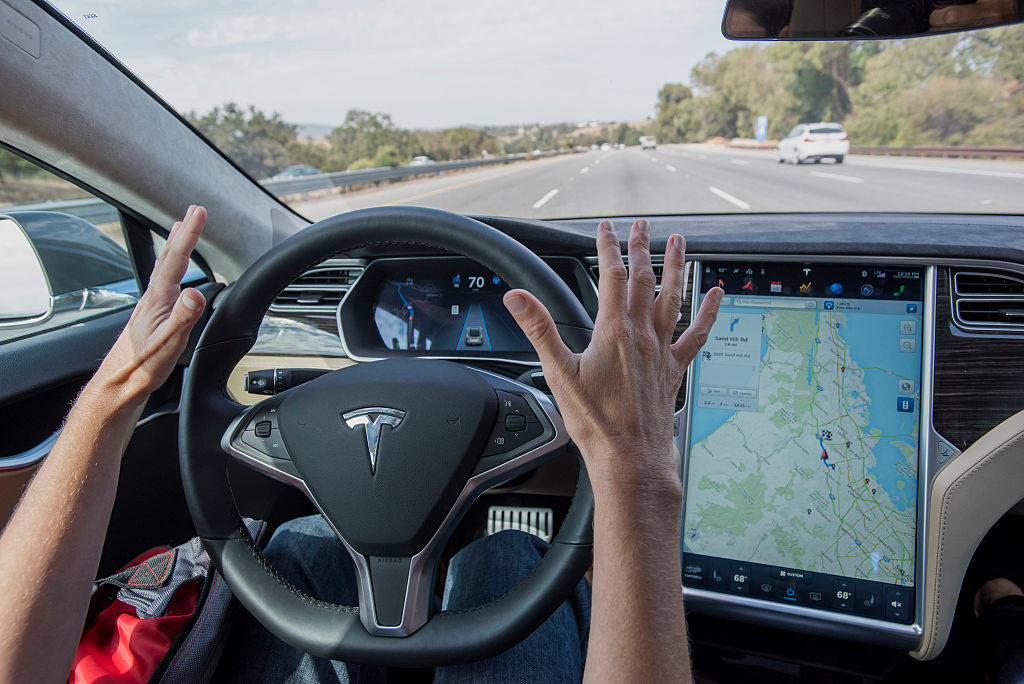Auto
Robots? No, Breakthrough Technology Will Be in Cars

(Bloomberg Opinion) — Over the next 20 years, what will be the most unexpectedly transformative technology? It’s a question that’s been asked of me more than once recently, and my counterintuitive answer is the automobile — and I am not referring to self-driving vehicles. Often innovation comes most strongly in basic, frequently used services, where the value proposition is already well established. So the car has a distinct advantage over a Mars colony, say, or a hyperloop.
The automobile experience has already improved greatly in recent years, mostly through ride-sharing, which enables new trips or helps people get work done or talk on the phone when they otherwise would have been driving. Ride-sharing has been the biggest technological boost to my standard of living since the smartphone, and the service benefits both drivers and non-drivers. It’s not surprising that two of this year’s most publicized IPOs are Uber and Lyft, with Uber having a potential valuation of $90 billion. And many Americans haven’t even started using ride-sharing, so there is plenty of room for the market to grow.
As a general principle, major initial innovations lead to subsequent further innovations. For instance, ride-sharing already is substituting for some forms of public transportation. To some this development is deplorable, but the reality is that usage of mass transit in the U.S. is already declining. Furthermore, many regions of the U.S. are depopulating, and the future of bus and train lines there is not very bright. Ride-sharing will help keep transportation services available in those areas, and help maintain their economic viability, including for the elderly who no longer always feel comfortable driving.
Another reality of the contemporary automobile is that Tesla has managed to rethink the entire design. The dashboard and interior are reconfigured, the drive is electric, software is far more prominent and integrated into the design, voice recognition operates many systems, and there are self-driving features, too. Whether or not you think Tesla as a company will succeed, its design work has shown how much room there is for improvement.
You might object that cars have numerous negative features — but that’s where there is much of the potential for major transformation. Cars cause a lot of air pollution, but electric cars (or maybe even hydrogen cars) are on their way, and they will lower noise pollution too, as hybrids already do.
Cars also create traffic congestion, but congestion pricing can ease this problem significantly, as it already has in Singapore. Congestion pricing used to be seen as politically impossible, but the Washington area recently instituted it for one major highway during rush hour. The toll is allowed to rise as high as $40, but on most days it is possible to drive to work for about $10 and home for well under $10, at speeds of at least 50 mph. Manhattan also will move to congestion pricing, for south of 60th Street in Midtown, and the practice will probably spread, both within New York and elsewhere, partly because many municipalities are strapped for cash. As for building new highways, transportation analyst Robert W. Poole Jr. argues in his new book that there is plenty of room for the private-sector toll concession model to grow, leading to more roads and easier commutes.
In other words, the two biggest problems with cars — pollution and traffic congestion — have gone from “impossible to solve” to the verge of manageability.
There is also the issue of safety, as automobile crashes kill about 40,000 Americans a year. But software can help with automatic braking, detection of menaces, and monitoring whether drivers are drunk or stoned. Crash impact systems can become safer yet. Pedestrians deaths are up, but perhaps smartphones can be improved to detect and warn of oncoming vehicle menaces, or improvements could come on the vehicle side.
And if full self-driving vehicles do work out on a broad scale, with Wi-Fi and napping in the back seat, the car will get better yet. In the meantime, the proliferation of podcasts has made driving a lot more fun.
One reason the car is underrated in its potential impact is that America’s media elites often live in New York City or Washington, two cities where you don’t need a car and maybe shouldn’t have one.
Right now there are about 281 million cars registered in the U.S., and they have pretty hefty price tags and demand many hours of time. The basic infrastructures and legal frameworks are already in place. So, despite the current obsessions with robots and gene editing, it should be evident that the biggest tangible changes from technology in the next 20 years are likely to come in a relatively mundane area of life — namely, life on the road.
-

 Alamaliktistaad Magazines2 months ago
Alamaliktistaad Magazines2 months agoAlam Al Iktisaad – September 2025 Edition
-

 News2 months ago
News2 months agoKitchenomiKs Secures Investment of US$3.2M Led by Jasoor Ventures
-

 Banking & Finance2 months ago
Banking & Finance2 months agoOman Arab Bank Highlights Its Ongoing Strategic Initiatives and Future Plans
-

 News2 months ago
News2 months agoIEA Expects Global Oil Market to Remain Oversupplied in 2026
-

 Energy2 months ago
Energy2 months agoWLGA Middle East LPG Summit & Expo 2025 to be held at OCEC on November 10 and 11
-

 Real Estate2 months ago
Real Estate2 months agoAl Mouj Muscat Unveils Azura Beach Residences Phase 2: A New Chapter in Waterfront Living
-

 Leaders Speak1 month ago
Leaders Speak1 month agoDhofar International Development and Investment Company: Driving Sustainable Growth and Strategic Synergies in Oman’s Investment Landscape
-

 Events1 month ago
Events1 month agoOER Corporate Excellence Awards 2025 Honours Entities and Innovations in Oman































You must be logged in to post a comment Login